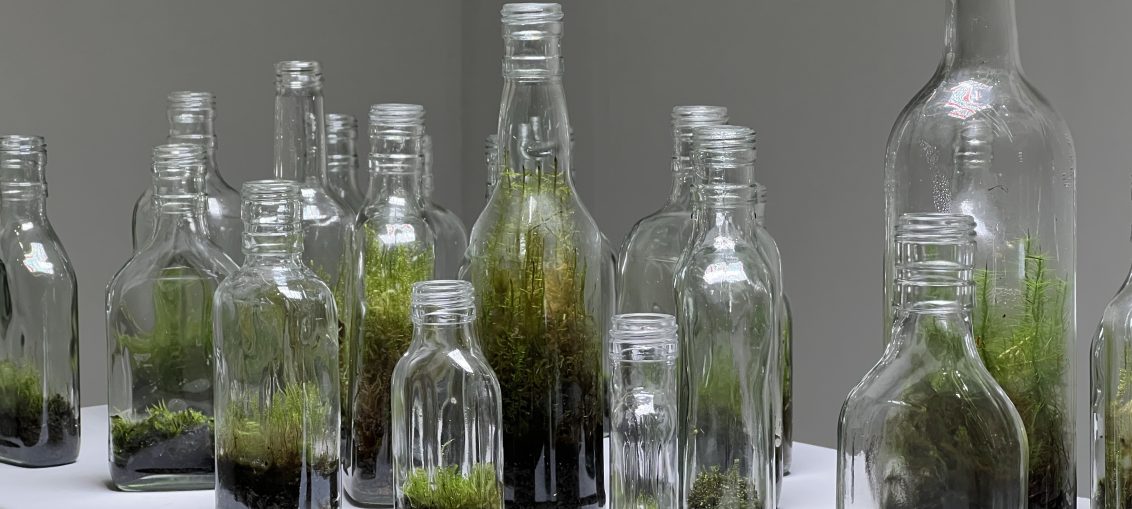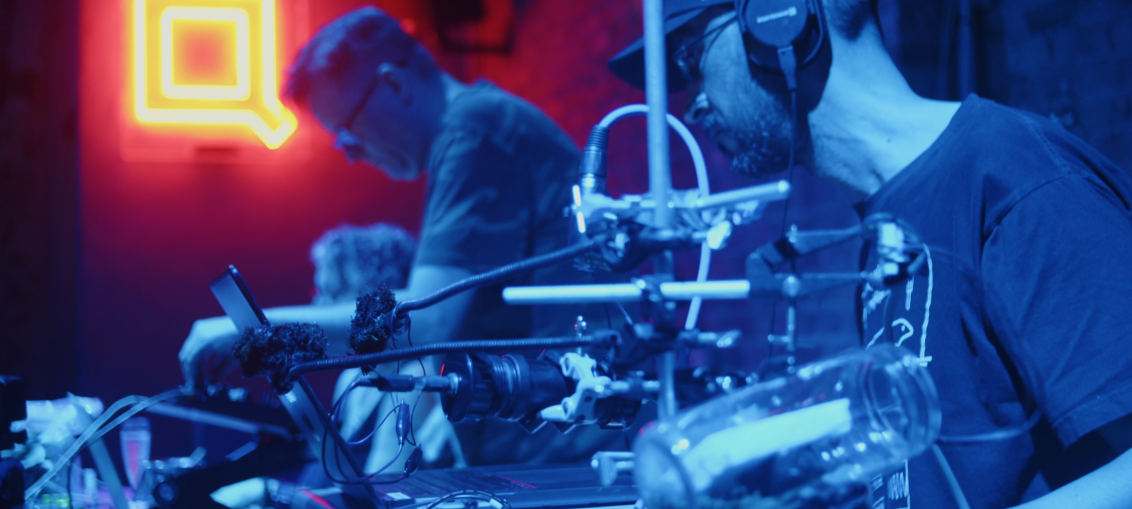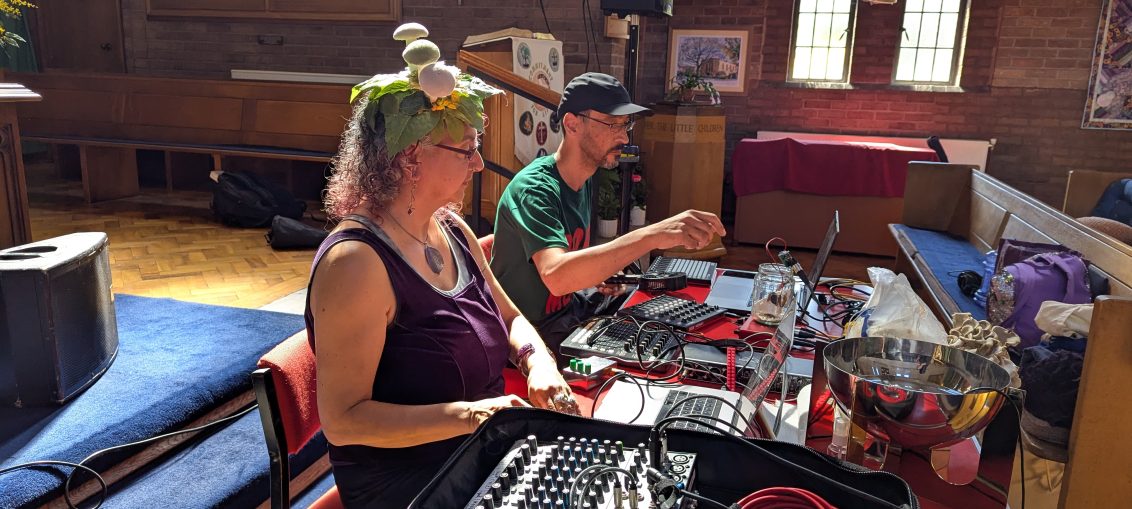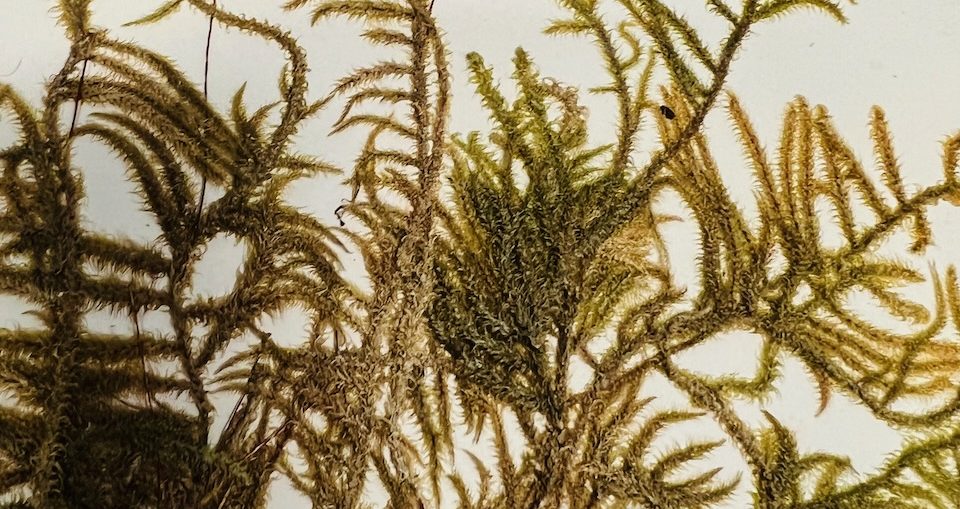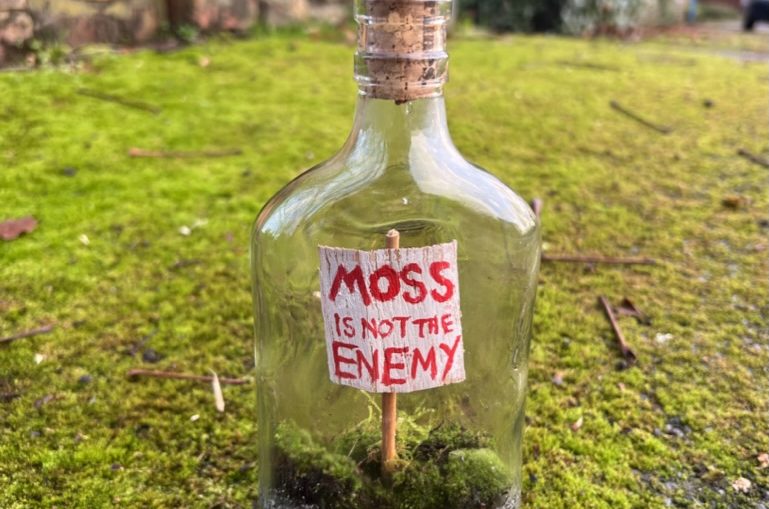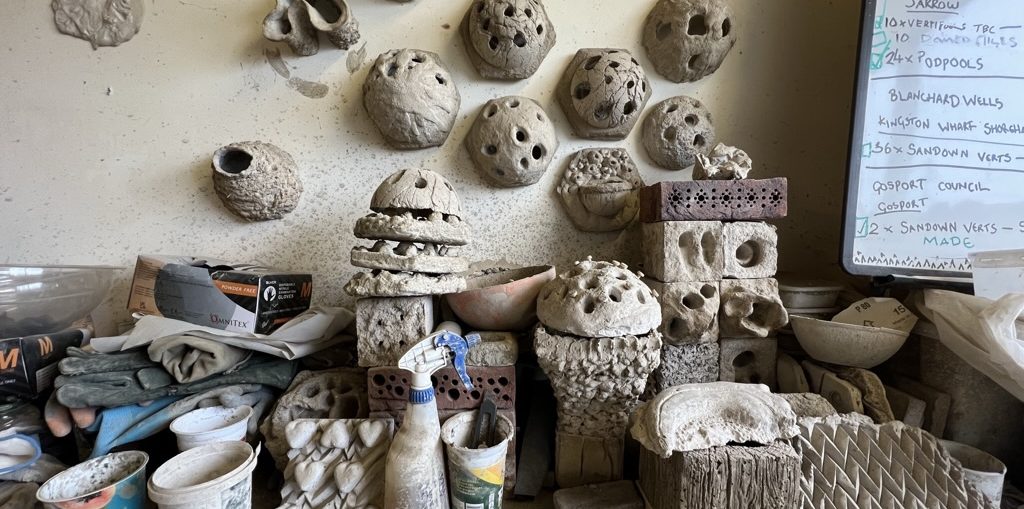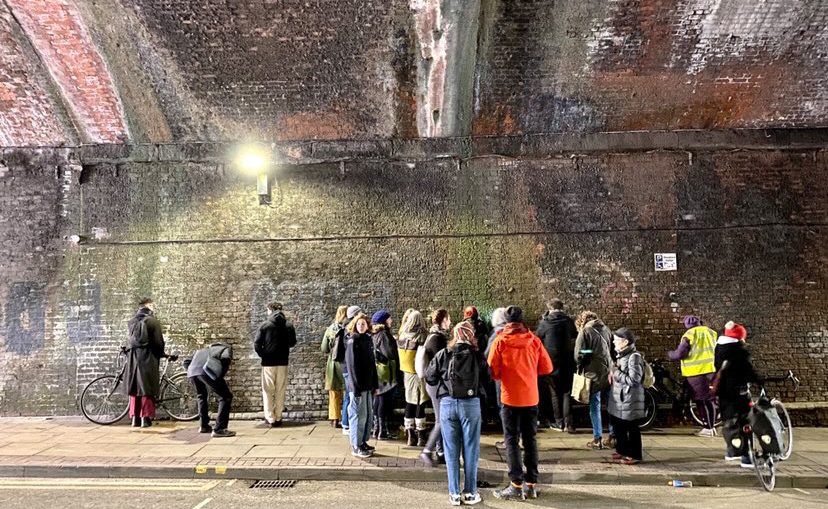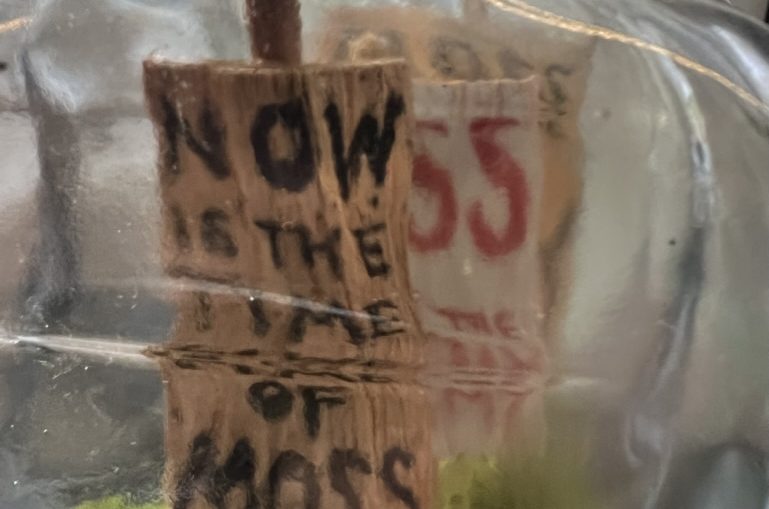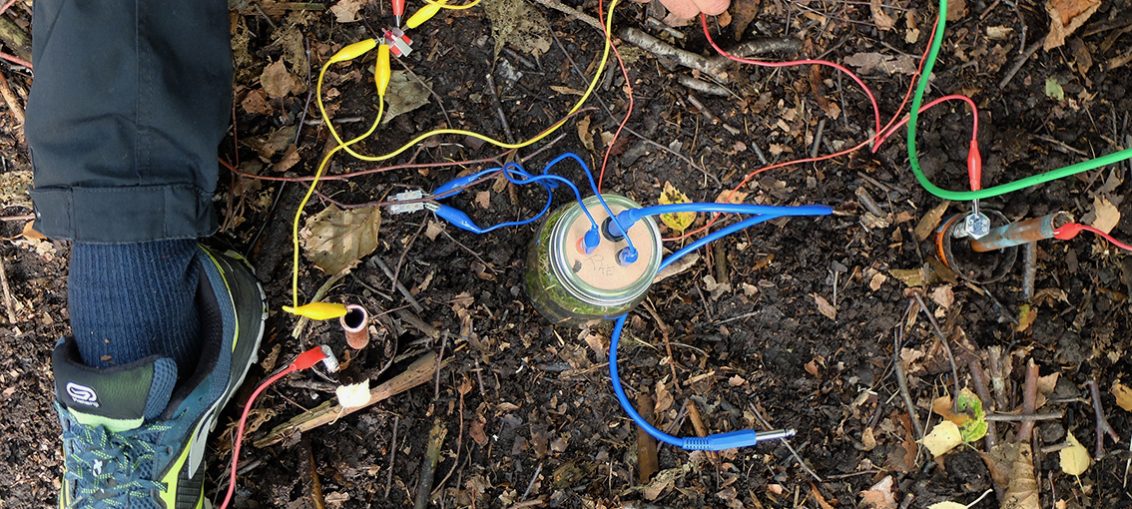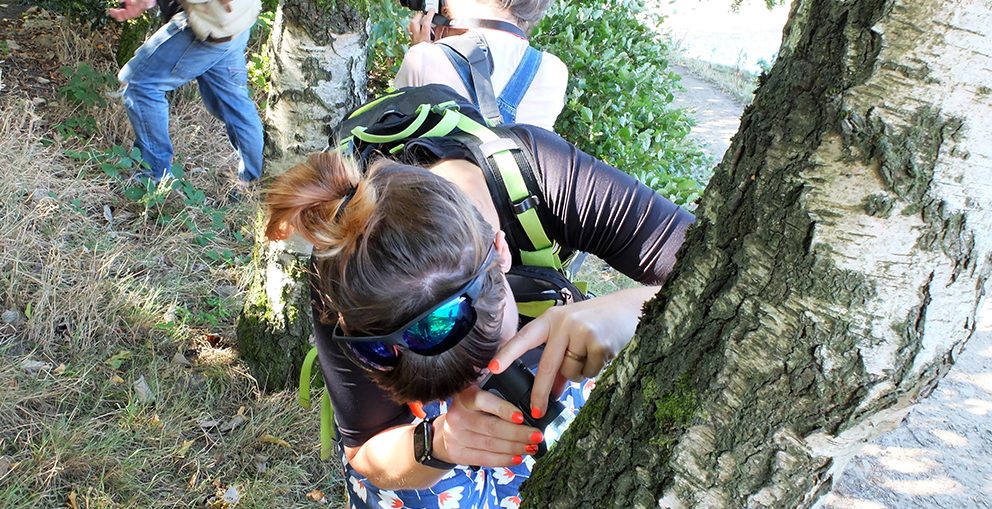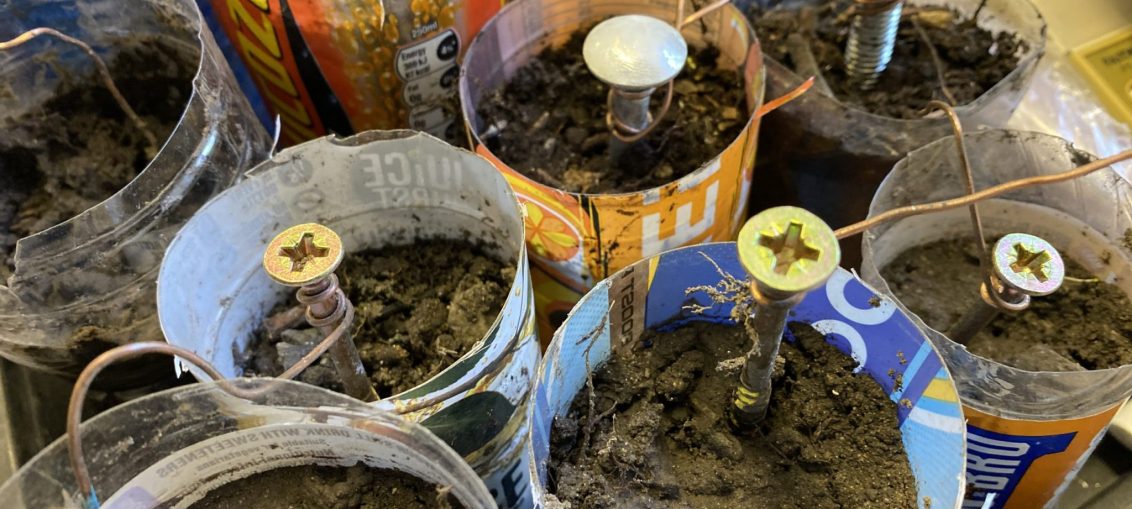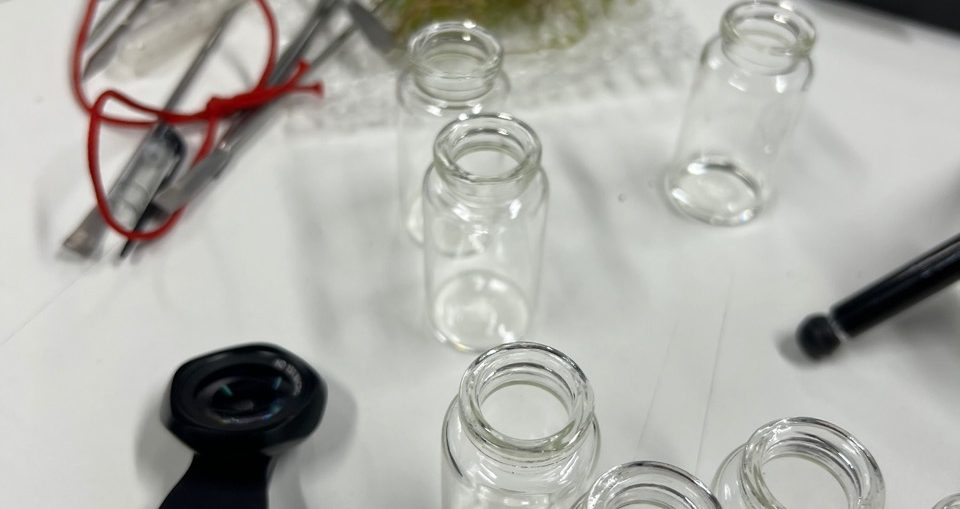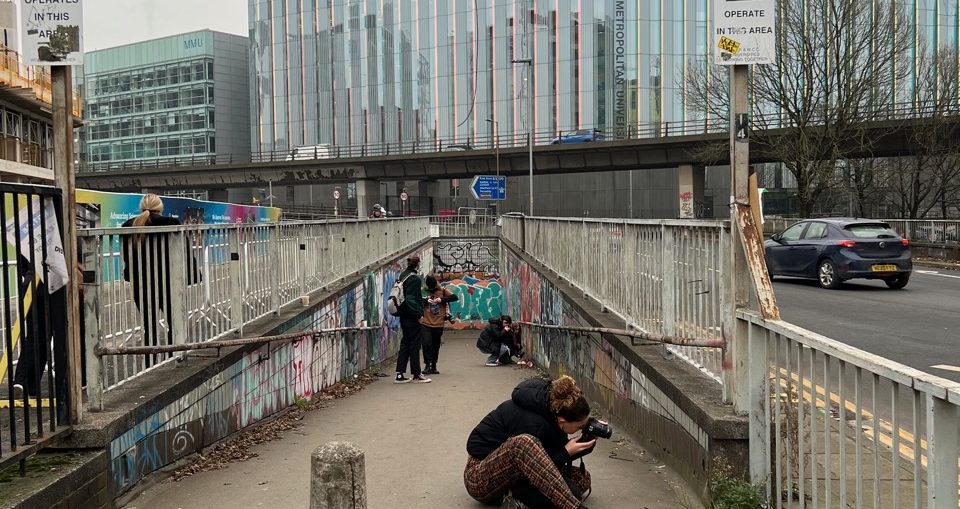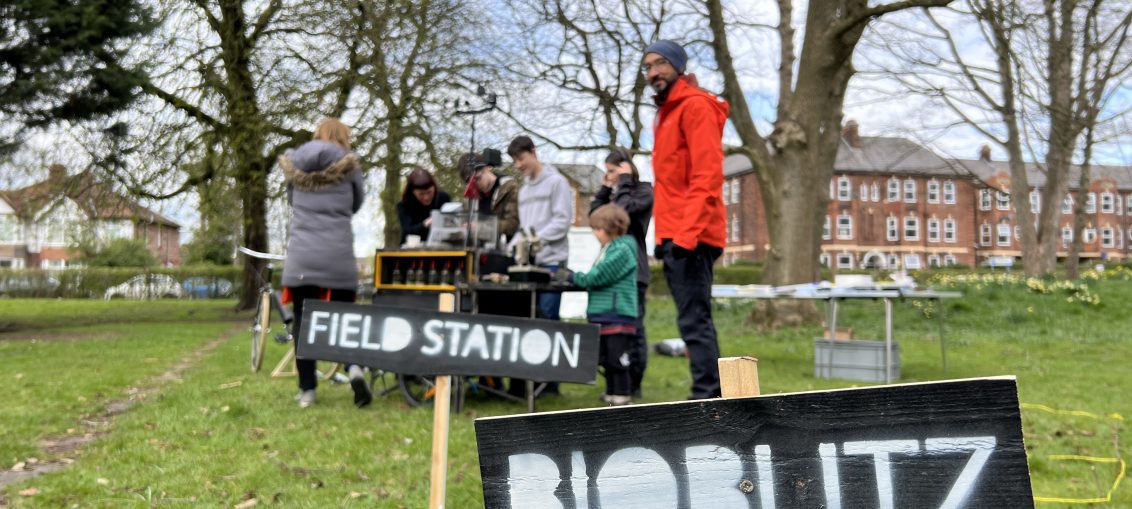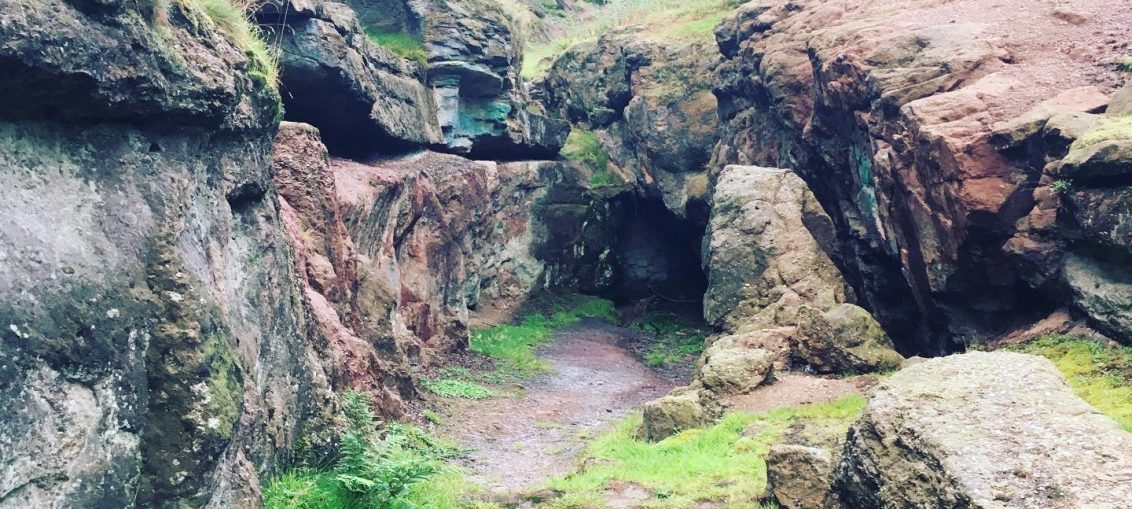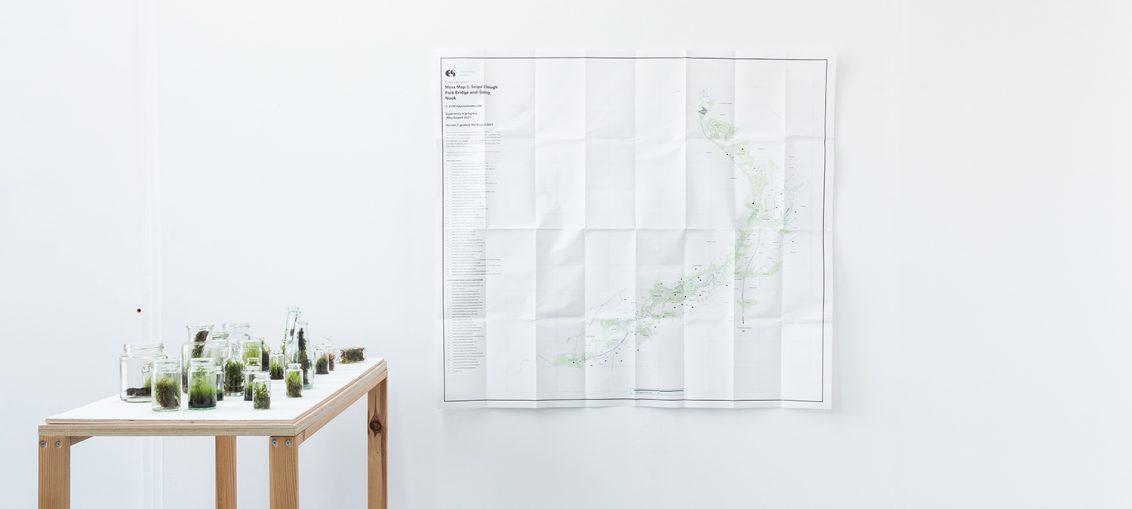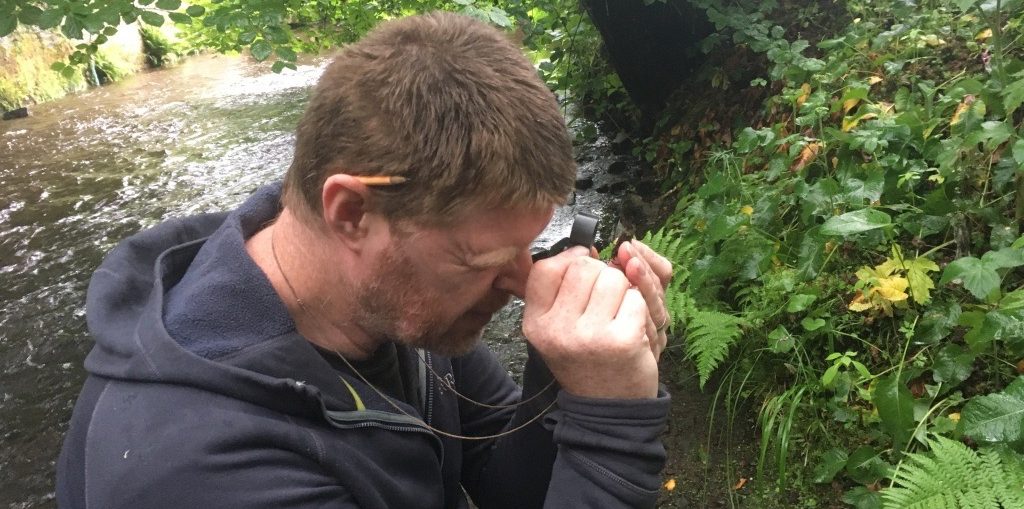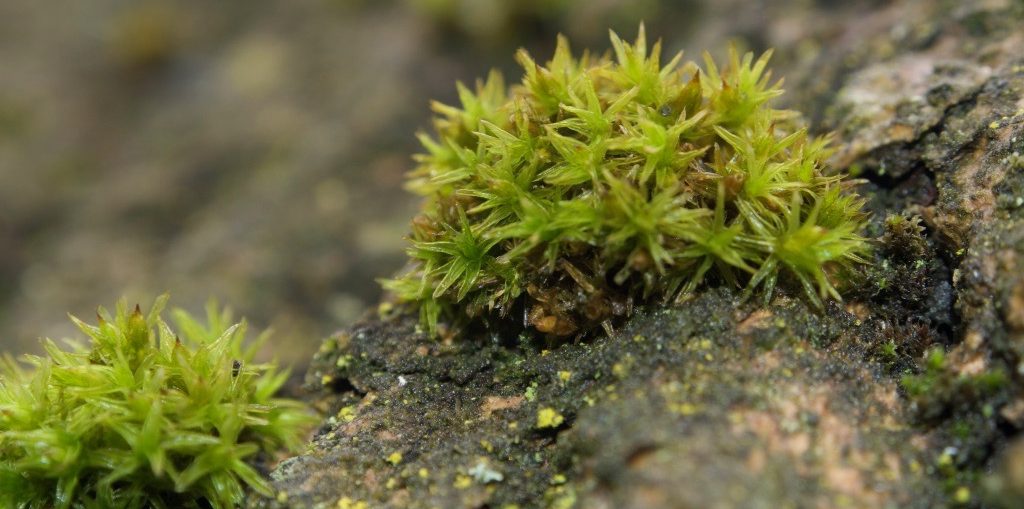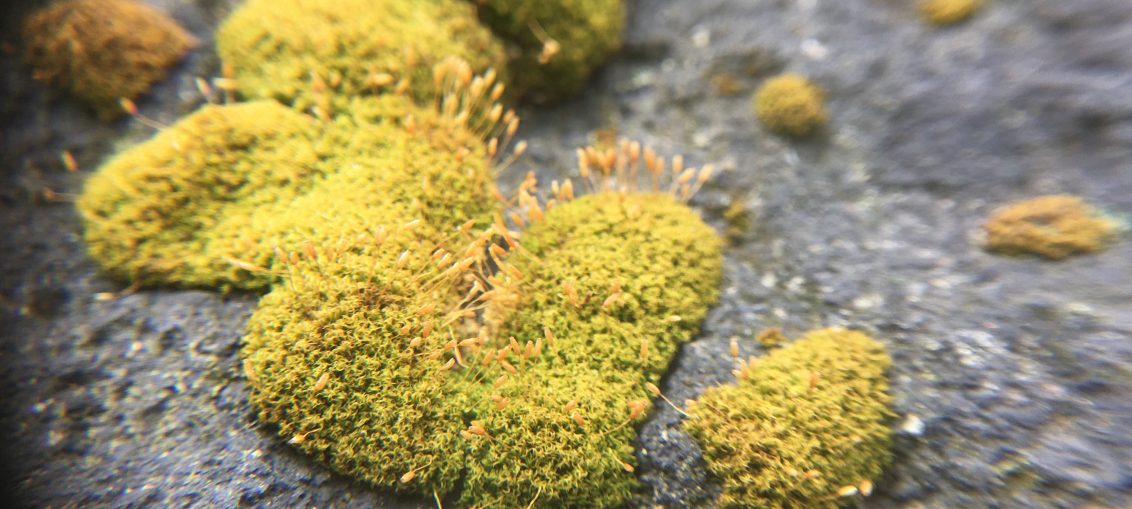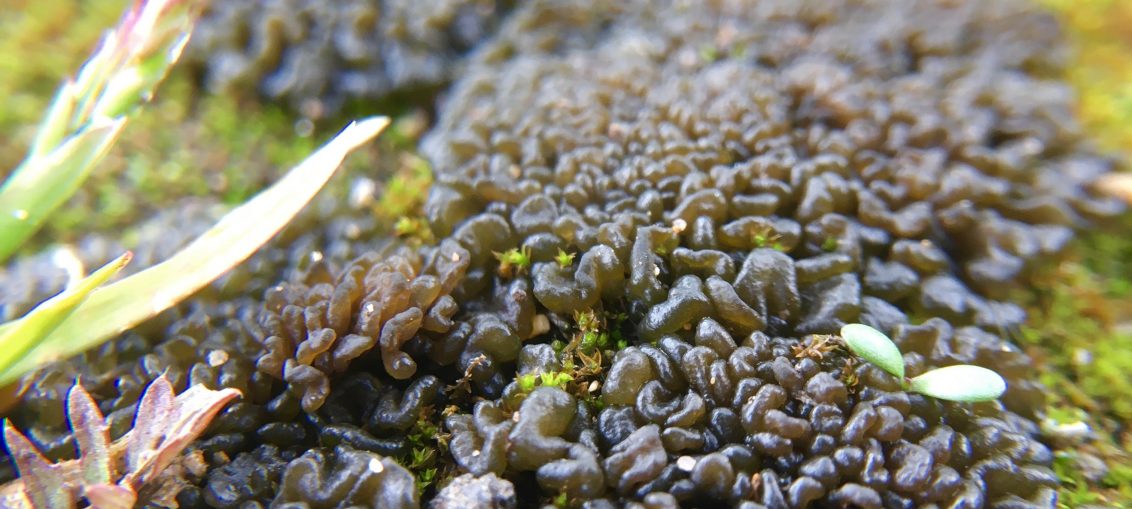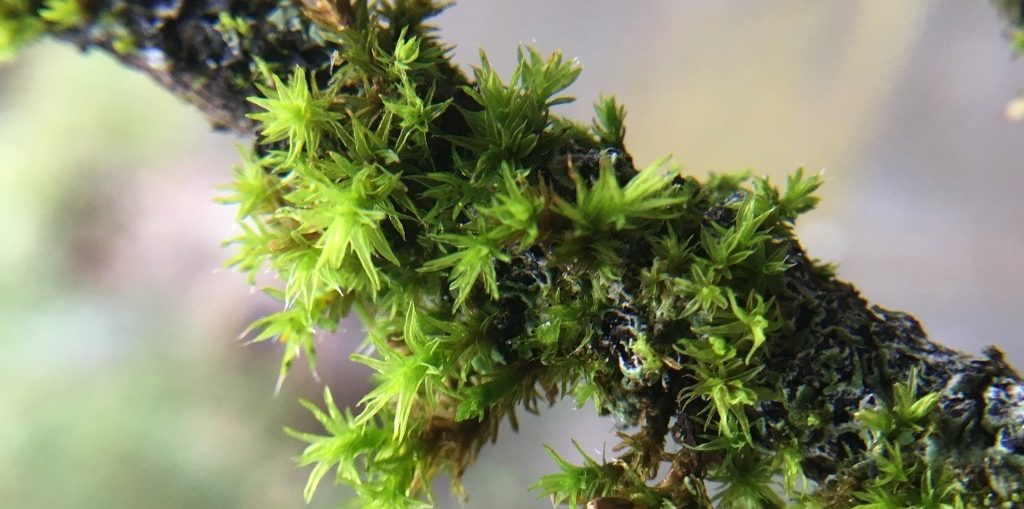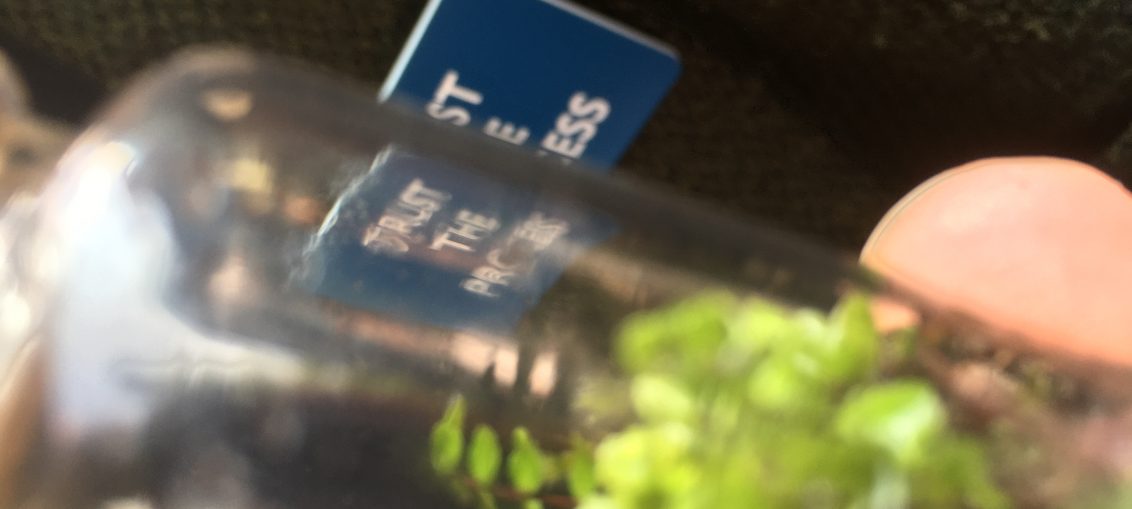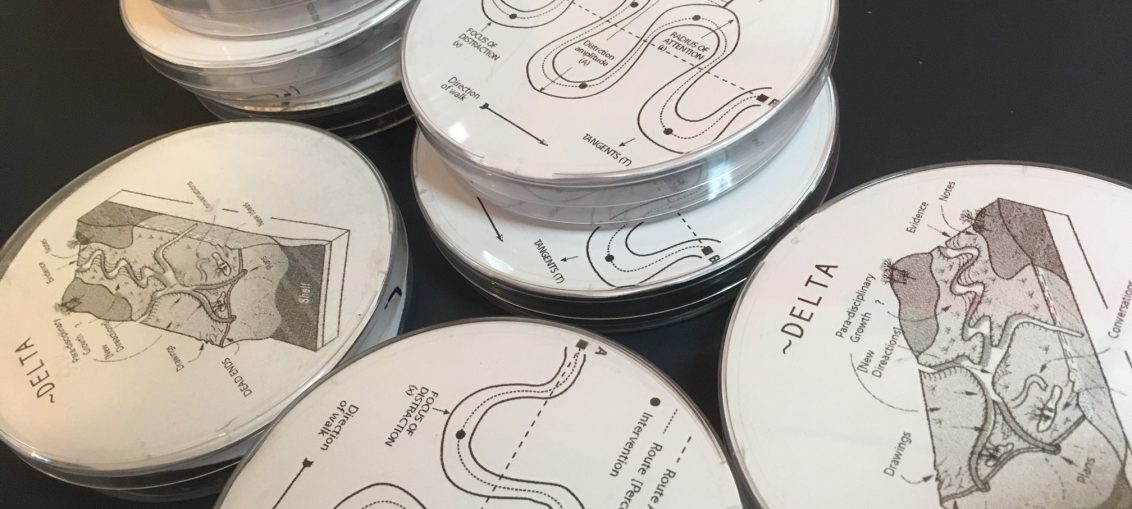It’s not often I get to opportunity show my work in an actual gallery these days such is the plight of the socially engaged / process based artist, and it makes me remember how much I love the process of developing a dialogue with other artists and the space of gallery. And it is a delight to be showing along side some amazing artists. @verdant.city @adelecjordan@mishkahenner and @rebeccachesneyartist @galleryoldham A Minute to Midnight December 7 - March 1, 2025 So how does moss relate to climate change? Here are some interesting facts I put together for @sparkartistsnetwork and the forthcoming panel discussion: Moss is under threat: According to the 2023 IUCN Red List of the of moss in Britain , 19% are
Tag: moss
Biokinetic Mantra for the Evocation of the Animistic Matrix
live performance with Maya chowdhry and Chris Gladwin. "This 30min live electronic music performance will feature organic components (mushrooms, moss, terrariums, water) being brought into contact with the ecstatic technology of dance music."I have recently returned to performing live and reawakened a part of my brain that had been dormant for a while. I'd forgotten how much I absolutely love the focus and intensity. The excitement of not knowing what's going to happen, or indeed sometimes wondering what is happening when something completely new emerges. Working with new collaborators has pushed me to explore new methods, leading to a number of fresh works in progress. Last month, I performed with Chris Gladwin and Maya Chowdhryat DVRK MASS II | Sonic Transformations: Ecosystems (organised by
Electronic Music Ensemble at Chorlton Arts FestivalElectronic Music Ensemble at
I performed as part of a line up from SODAs electronic music ensemble (which comprises of students, alumni and staff) at Chorlton Arts Festival, in Wilbraham St Ninian’s Church. I performed again alongside Maya Chowdhry continuing the ‘Biokinetic Mantra for the Evocation of the Animistic Matrix’ project - bringing together bioacoustics filed recording live electroaccoustics, and techno. This involved Darkling beetle larvae and rehydrating moss on hydrophones… Image: Neil Spencer Bruce SODAs electronic music ensemble 5691
We were by the tumbling stream.
Moss identification card deck
This card pack was developed for a moss walk for the Eco pedagogies Symposium 2024. The walk traced a route between the Firs Botanical Gardens and Manchester Museum. In this iteration of the moss workshop, I discussed my emerging "methodology of moss" and the role of art as a perception-changing device. To develop the card pack I photographed each species of moss I found along the route and created a card for each one, including information on the numerous biomes encountered. These cards not only aid my learning and memorisation of moss species but also include prompts, instructions, texts, and readings that will enable others to facilitate their own walking and moss workshops in the future.
MOSS IS NOT THE ENEMY
Boundary detectors – mosscillator walk
A day of field work, walking and talking with @glassball.studio we walked across a segment of the Peak District national park boundary, connected our boundary detector up to a fence to create a strange radio like circuit (also connected with a bat detectors as signal transducer) we could hear strange sounds emanating from the either. Initially we discovered we could almost perfectly receive Radio 4. With some further tweaking / breaking we were able to get a multitude of voices - “Hello…Hello… “ one said as if speaking to us. View this post on Instagram A post shared by Antony Hall (@tonazoid)
Visit to Art Ecology
I visited the Isle of Wight to find out more about the Art ecology group and their #vertipool project (and generally chat about moss and urban / eco design). They have an Interesting ideology of hyper-local working and employ a methodology that resists consumerist mass production models (many #greenwalls and moss tiles are patented technologies that require energy and are tied into maintenance contracts. Alternatively Art Ecology take more of an open source socially engaged approach, working with communities and training people to help make the pools (which are best made by hands). This hand making approach allows for a greater speed of making and building in complex structural features, nooks crannies and overhangs, that would not be possible with
SPARK#9 Moss Walk
A couple weeks ago I took people on an urban moss walk for Spark#9 a monthly meeting organised by @sparkartistsnetwork @castlefieldgall . It was a short walk (only half of what I planned) mostly staring at damp walls under bridges. This particular bridge is host to an unusual (in an urban context) liverwort called Metzgeria furcate clinging onto existence in this cave like environment. Under another bridge just down the road, a more common but impressive Great Scented Liverwort - Conocephalum conicum grows in ring like formations over the walls (Liverworts are bryophytes like moss). We rounded up the walk at the recently reopened @mcrmuseum where we talked and made terrariums. It was heartening to have such a good turn out –
NOW IS THE TIME OF MOSS
Boundary Detector Workshop / Part – 2
17/09/2022 Second Workshop at Longdendale Environmental Centre as GUIDEline project with Glassball Studios: In this workshop, we continued to work on our boundary detectors; moss terrariums with carbon and aluminium layers which act as electrodes. In my test, I used moss growing on a carbon graphite felt layer (the anode), over a granular substrate of Zeolite (the electrolyte, but in the workshop, we used grit and mud collated from the boundary). The base of the jar is covered with aluminium foil (the cathode). As the moss photosynthesises and microbes do their thing - electrons are exchanged between the two electrodes generating electricity (more info on the science at end of this post). However, it is as yet unclear exactly how
Boundary Detectors workshop / Part – 1
1/09/2022 Workshop / Longdendale Environmental Centre / GUIDEline project with Glassball Studios: We met at Longdendale environmental centre for a day of walking and micro exploration, following a segment of the peak district boundary. The idea was to walk slowly, looking closely while collecting samples (microscopic creatures, plants, minerals, sounds), and explore how these things interact within the hypothetical space of the boundary space. Above: Image by Cora Glasser / Glassball Studios. We discussed 'boundary layers' the spaces or microenvironments existing on surfaces or between objects and the free-flowing stream of air (gasses, humidity) and light. Mosses exist at specific boundary layers, miniature forests which act like environmental bubbles, trapping moisture, and creating shelter. Moss and other small plants Algae, and Lichen
GUIDEline Micro-Commission
Exploring the nature and origins of the first National Park and its boundary. I have been commissioned as part of the GUIDEline project by Glassball Studio. Over the summer Alison Lloyd and I will be working alongside Glassball, continuing a conversation that started back in 2021, bringing our practices to the boundary of the Peak District National Park, using the Longdendale Activity Centre as a base from which to explore. Here are some outcomes, ideas and works in progress so far... Walk with Tim Cambel-Green View this post on Instagram A post shared by Dr. Antony Hall (@tonazoid) Walking with Tim - exploring these
Proximity- Residency at Rogue project space
Proximity Collective In Residence at Rogue Project Space: 11th April - 5th May 2022 Proximity is a collective of 6 artists interested in the spatial and social elements of practice-as-research (established May 2019). Through a series of in-person residencies across the north of England and regular virtual meet-ups, we have developed our approach of “convivial aesthetics” and provide one another with professional, creative, and emotional support. During our residency at Rogue Project Space we will continue to explore different ways in which our proximity to each other can create new ideas, ways of thinking, and strategies for making and thinking art. View this post on Instagram
Moss walks
During a residency with Gallery Oldham (2021) I worked with bryological (moss) specimens collected from the local area 150 years ago. This inspired a series of meandering walking workshops focused on revisiting and recollecting mosses from my local area. Meandering is a form of walking fieldwork where participants engage in a series of “focused distractions”—activities like collecting, sampling from the environment, and microphotography—to redirect their attention and uncover alternative perspectives. These workshops explore Manchester's post-industrial and regenerated urban spaces. By employing macro photography and ground-level perspectives, we investigated overlooked areas and subtle aspects of the urban environment, encompassing both architectural and biological elements, as well as human and non-human interactions. Participants also collected small samples of moss to create micro-terrariums, serving
BIOBLITZ – Platt Hall
Platt Hall and Garden Open Day Saturday 2nd April Field Station set up outside the wonderful Platt Hall as part of their open day. I invited people to take part in an intensive BIOBLITZ. That is, documenting all living things in the area, from trees to moss and microorganisms. We placed a series of quadrants [square metres] to see where the most biodiverse sites are around the building]. I shared techniques for hunting and documenting creatures and provided ID resources; microscopes and macro-lenses to get close-up views of what we found. All the results were logged throughout the day on iNaturalist. See https://uk.inaturalist.org/projects/field-station-bioblitz-at-platt-hall Images from the BioBitz at Platt Hall and some wildlife recording prep at Debdale park a few
The sound of Moss
Recordings of the sound of dry clumps of Moss rehydrating [various species] growing in the woods Alderley Edge, absorbing the moisture from a fine vapour, using hydrophones put into the soil underneath the moss. See https://www.invisibleworlds.ac.uk/ . This is a technique I developed through the bryophytes project at Gallery Oldham. Antony Hall · bio-crust study: Moss rehydration
Moss Map
During a residency with Gallery Oldham (2021) I worked with bryological (moss) specimens collected from the local area 150 years ago. This inspired a series of meandering walking workshops focused on revisiting and recollecting mosses from my local area. Meandering is a form of walking fieldwork where participants engage in a series of "focused distractions"—activities like collecting, sampling from the environment, and microphotography—to redirect their attention and uncover alternative perspectives. The Moss Map serves as a multi-layered, always changing, exploration of experience and memory, documenting a meandering research journey. See Bryophytes project with Gallery Oldham Images from the 'Proximity' exhibition At Abingdon Studios 26 Aug – 16 September 2021. The 'Moss Map' and bottle terrariums were created as part of the bryophytes project
Bryology walk with Anthony Gregory
At the beginning of the project with Gallery Oldham, I was given a list of local sites to visit, which would have been popular in the 19th century for collecting bryophytes. I have been collecting my own specimens from these sites, which will then be sent to Anthony Gregory, an expert Bryologist, for formal identification. These will then be sent back to the museum to be catalogued and become part of the museum's collection for posterity. I met up with Anthony for a riverside walk to get a crash course in bryology. We met at Greenbank train station and made our way to a footpath alongside the River Tame. We walked slowly, stopping regularly at tress and venturing down to
Kinder Downfall
This page has three walks that took place as part of the Gallery Oldham Bryophytes project. Two Loops around Kinder reservoir, starting from Hayfield [with a short 6k and long 14k option] the other from Edale [17k]. Both are challenging walks with plenty of hill climbing. Sturdy shoes, waterproofs and a map are recommended. Both of these walks centre around the River Kinder. Rain falling on the kinder plateau is absorbed into the blanket bog and slowly trickles out into a series of tributaries and gullies which slowly seep through the peat. These conjoin and meander across the plateau toward Kinder Downfall - a rocky outcrop where the river drops into the valley below eventually filtering into Kinder reservoir. In each walk, the diversity
Moss re-hydration
Contouring the Boundary
Reflections on Contouring the Boundary I took part in ‘Contouring the Boundary’ a walk with Alison Lloyd [part of ‘Guide Lines’ [https://guideline.org.uk] and Glassball as part of their Guideline project. Alison described the walk as a 'micro navigation. We slowly walked part of the Peak District National Park boundary. During the walk, we were introduced to the idea of navigating using contours and a compass. It was good to be out with others since I have become so accustomed to working at a distance from others in recent times. View this post on Instagram A post shared by Glassball Studio (@glassball.studio) In particular,
Nostoc
Gallery Oldham residency: Bryophytes Project
I will be doing a 3-month residency [funded by the NWCDTP (North West Consortium Doctoral Training Partnership) at Gallery Oldham (May to July 2021). I will be working in response to plant specimens in the natural history collection, specifically Moss (or even more specifically 'bryophytes' and other plants without roots). Since access to the gallery will be limited for some time, I will be working at distance (walking and cycling) revisiting historical sites of collection and re-collecting specimens. I will be talking with local experts, volunteers, environmental scientists, and other natural history enthusiasts, vital component parts of the museums as an ongoing collection process. Specimen envelope: cinclidioidesBryophyte Book Images of objects from the Gallery Oldham Natural History collection, Thanks to Patricia
Para-Lab moss collecting Meander
A walking workshop with para lab. I created this bottle with instructions and hand-drawn illustrations, a different one for each bottle. We walked around manchester and collected mosses from some unusual sites, the route took us through some back streets and along the canal. Finally, we stopped at 'Home' constructed bottle gardens while chatting and drinking coffee.
Para Lab – Meander~Delta
On the 28th / 06/2020 para lab met up at Brunclough reservoir. Everyone was tasked with creating ’a device to test the material properties of a thing’. I produced an edition of 15 Meander~Delta objects [drawings and text contained within a petri dish] with which to collect things and make notes, I also brought a homemade tardigrade extractor [salad spinner]. The wind and rain on occasion proved to be too disrupting to do any detailed work – or too difficult even speak to each other… https://www.instagram.com/p/CB-3MrkllD6/?utm_source=ig_web_button_share_sheet https://www.instagram.com/p/CCBafc3F-2n/?utm_source=ig_web_button_share_sheet
